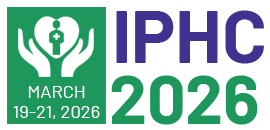Title : Female masturbation practices among different populations and age groups
Abstract:
Aim: This study was to assess efficacy of sexual education in schools, the inclusion of female masturbation in such and its sufficiency regarding the preparation of adolescents for safe and consensual sexual activities. Effects of religious, cultural, and parental factors on women’s views on masturbation as well as the nature of women’s emotions during masturbation were assessed. The frequency of female orgasm during masturbation to sexual intercourse with a partner were compared.
Methods: Cross-sectional anonymous online questionnaire with 24 questions both multiple choice and open ended. Inclusion criteria was female/identify as female, 18 years and older. Approval of the study by Riga Stradins Research Ethics Committee. The questionnaire was promoted on various social media platforms and by word of mouth for a period of 3 months. Analyzation of data was conducted via SPSS 27 system.
Results: A sample size of 1068 participants, aged ≥ 18years, mainly European (46%) and North American (43%), was obtained. 64.6% reported insufficient sexual education. 84.4-85.2% stated that female masturbation was not covered, with 59% of participants indicating the need for it. Amongst 39.2% of participants, parents didn't discuss any sexual education with them with 29.8% of participants forbidden to engage in pre-marital sexual activity. Amongst those prohibited 38% still masturbated. A total of 1.3% of participants underwent genital mutilation. Assessing frequency of masturbation majority (40.3%) reported to masturbate more than once weekly with the most popular mode of masturbation being sex toys(44%) followed by hands(42%). Comparing the frequency of orgasm while masturbating versus during sexual intercourse with a partner, 59% always report having an orgasm while masturbating solo; compared to 15% when with a partner. Emotions experienced by women during masturbation were mostly positive with the majority feeling relieved (68.7%).
Conclusions: Sexual education programs in schools are insufficient in teaching about female masturbation and preparing students for safe, consensual sexual intercourse; they require reassessment by UNESCO and WHO for more efficient implementation. Female masturbation should be considered a right to female sexual health, this needs to be ensured and included as a normal topic of discussion, no longer considered a taboo in society.



